Malfunctions of crane electric motors
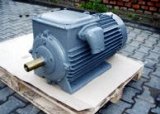 Malfunctions in the operation of crane electric motors occur as a result of prolonged operation without repair, unsatisfactory maintenance or violation of established operating modes.
Malfunctions in the operation of crane electric motors occur as a result of prolonged operation without repair, unsatisfactory maintenance or violation of established operating modes.
Malfunctions in the operation of crane electric motors can manifest themselves in the following: changes in the characteristics of the electric motor, that is, its speed and torque, the instability of these characteristics, that is, unacceptable fluctuations in the speed of rotation, unacceptable high general and local overheating of the electric motor, unacceptable vibrations , loud noise, unacceptably high spark under the brushes of the DC motor or on the rings of the asynchronous motor.
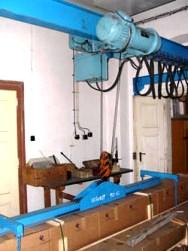 In addition, the causes of malfunctions are divided into electrical, magnetic and mechanical. YES electrical causes include: destruction of the coil insulation, breakage, poor contact at the junction of wires, burning of collector plates or slip rings, etc. magnetic causes include: loose pressing of steel sheets, closing between them, etc.
In addition, the causes of malfunctions are divided into electrical, magnetic and mechanical. YES electrical causes include: destruction of the coil insulation, breakage, poor contact at the junction of wires, burning of collector plates or slip rings, etc. magnetic causes include: loose pressing of steel sheets, closing between them, etc.
YES mechanical causes include: bearing failures, belt failures (breaks, loosening, falling off), knocking of the collector or rings, curvature and breakage of the shaft, broken brush holders, imbalance of rotating parts, etc.
One of the most common malfunctions of asynchronous motors is damage to the windings... Reversal short circuit in the coil, phase-to-phase short circuit in the winding and short circuit of the winding to the case are usually the result of deterioration of the insulation: breaks in the windings — as a result of desoldering of the connection points or mechanical damage to the winding of a small section.
The most vulnerable points of the winding are the points of its exit from the grooves, bends or junctions in the front parts, connecting wires of groups of windings. Damage can also occur where the coils are connected to the power cord.
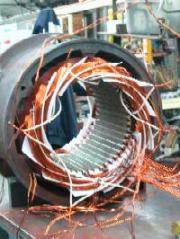
Turn faults (short circuit in one phase) in the stator winding can be detected by severe overheating of the coil (or group of windings), by the increased value of the current in the damaged winding when the windings are star connected.
When connecting the windings in a delta, the ammeter connected to the circuit of the damaged phase shows a lower value compared to the ammeters connected to the circuit of the other two phases. It is recommended to determine the defective phase at reduced voltage (0.25 — 0.3 of nominal).
A turning error in the rotor winding can be detected in a similar way (using ammeters). In this case, the rotor winding overheats, the value of the current in the phases fluctuates, the stator winding heats up more than usual. When starting and working with resistors in the rotor circuit, the rotor winding smokes, a characteristic smell of burning insulation appears.
If in an electric motor with a wound rotor it is difficult to determine the location of the rotation circuit (in the stator or rotor winding), then the induction method is used: the stator windings are connected to the network and the induced voltages between the rings of the stationary rotor are measured. Their unequal value between different pairs of rings indicates the presence of a rotation circuit in the motor windings.
If, when rotating the locked rotor, the inequality changes in voltage, then the rotation circuit has occurred in the stator winding, and if it does not change, then in the rotor winding. In this case, the voltage between the rings of two phases, one of which is damaged, will be less than the voltage corresponding to two undamaged phases.
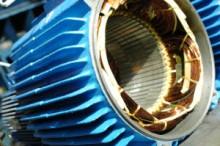
Stator winding short circuit to case and phase to phase short circuit can be detected using megohmmeter. The location of the short circuit in the box is detected either by examining the winding or by one of the special methods.
If only the insulation (but not the wire) is slightly damaged at the short-circuit point, it can be temporarily repaired with gaskets of suitable insulating materials by impregnating them with varnish. If the winding wires are damaged or the insulation is destroyed over a significant area, then the damaged coil is replaced.
Open circuits in the crane motor windings can also be detected with a megohmmeter. However, before you start looking for breaks or bad contact in the coil, you should make sure that there are no such defects outside the coil (due to insufficient contact of the contacts of the starters, loose contacts at the output ends, etc.).
In the event of a break, the megohmmeter will show an infinitely high resistance. When you connect the windings with a triangle, one of its corners (the "beginning" of one winding and the "end" of the other) is turned off during the test. When the windings are connected in star, the mains phase of the megohmmeter is connected to the output of each phase winding and to the neutral point of the windings. After detecting a defective phase winding, all coils are subjected to an open test and then, after careful inspection, the breaking point in the damaged winding is determined.
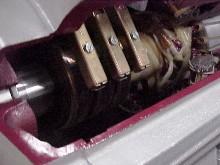
Most likely, breaks in the windings of wires are in the connections between the windings and in the windings of the rod, — in rations (clamps). In the short-circuited windings of the rotors of asynchronous electric motors, breaks or poor contact occur due to poor welding or brazing at the joints of the rods with the closing rings.
Interruptions in short circuits may occur in parts of the channel as a result of mechanical damage. In induction motor rotors with a cast aluminum winding, breaks in the spline portion may be due to defects during casting.
To verify that there is an open or poor contact in the short windings of the rotors, the following experiment is carried out. The rotor is stopped and a voltage equal to 20. — 25% of the nominal is applied to the stator winding. The rotor is then rotated slowly and the current in the stator winding (in one or three phases) is measured. If the rotor winding is in good condition, the current in the stator winding will be the same in all positions of the rotor, and in case of breakage or bad contact, it will change depending on the position of the rotor.
